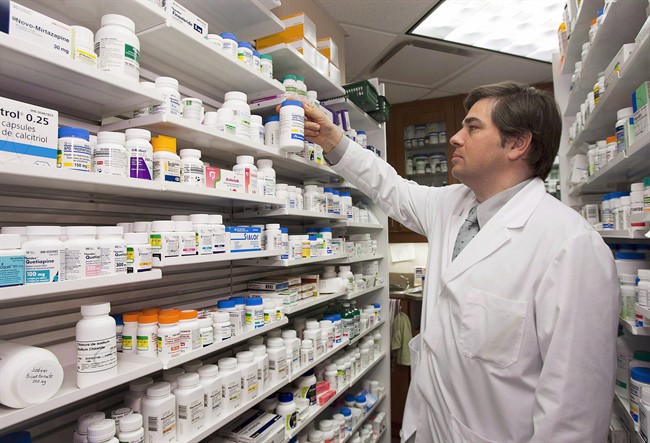One of Canada’s leading experts on health care is urging whoever wins the federal election to put the implementation of a national pharmacare program at the top of their to-do list.

“We need to stop studying this issue,” says Carleton University political economist Marc-Andre Gagnon. “This issue has been studied way more than it should have been. And it is very clear in terms of which model is the most efficient and this is universal pharmacare.
“This is where we need to go.”
A recent report from the parliamentary budget officer said a universal program for prescription medications would save $4.2 billion from the estimated $28.5 billion spent annually on prescription drugs.
Another report from the Advisory Council on the Implementation of National Pharmacare mapped out a national program that would cost taxpayers an estimated $15.3 billion in 2027.
The NDP and Green Party included universal pharmacare in their platforms, with the Liberals following suit last week. The Conservatives said they would increase health spending but not implement a pharmacare program.
So why doesn’t it exist in Canada?
When Tommy Douglas introduced universal health care to Canada in the 1960s, he had to cut out pharmacare and dental to push it through. However, the intention was always to introduce programs for both at a later date.

Get weekly health news
More than 50 years later, not only is Canada the only industrialized country with universal medicare that does not provide coverage for medications, but those same medications are among the highest priced per capita in the world.
As a result, nearly 10 per cent of Canadians who don’t have private health coverage can’t afford the drugs prescribed to them and are having to choose between food and medication.

For five years after arriving in Canada from Morocco, Sophia Achamsi was in that boat. She estimates she was spending $400 a month on supplies to treat her Type 1 diabetes. But when money was tight, she would get creative to make her medication last longer.
“(Needles) are one use, but sometimes I would use it twice because I’m rationing a bit,” she says. “I also ration insulin by not eating certain things.”
When she first came to Canada, she expected there to be a drug plan similar to the one she had in Morocco.
“I come from Morocco and I got insulin there for free. So when I moved to Canada, I was under the impression that it would also be free, given that it was invented here and it’s Canada’s gift to the world. But unfortunately it wasn’t,” she says. “So I had to try to pay for it in the pharmacy out of pocket.”
Of the $28.5 billion spent on prescription drugs in Canada in 2015, 46 per cent came from public insurance plans, 37 per cent from private insurance, and 17 per cent (representing 4.7 million people) was paid by individuals.
Gagnon says Canada has a “fragmented system for drug coverage” that hinders its ability to negotiate lower rates with pharma companies.
He says there are two main issues contributing to higher prices. The first is that far too many new and expensive drugs have been introduced into the market that don’t offer anything different than the drugs already there. And secondly, each of the more than 100,000 private insurance plans in the country have to negotiate their own rates for pharmaceutical drugs. Gagnon says a national pharmacare plan would negotiate as one entity and buy in bulk.
“Let’s have a system where everybody is covered for the drugs they need,” Gagnon says.
“We pool the risk on the old population. We beef up our bargaining capacity to reduce drug prices at the same time.”
Without a national plan the prices Canadians pay are going to go up. A 2015 Drug Trend Report found that specialty drugs for rare diseases accounted for 30 per cent of prescription drug costs and it predicts that by next year that number will go up to 42 per cent.












Comments